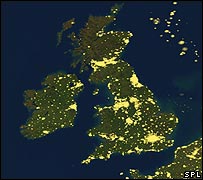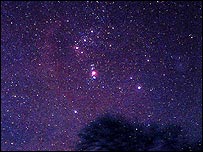 Sorry if this is in wrong section but read thisLight pollution 'masking stars'
Sorry if this is in wrong section but read thisLight pollution 'masking stars' 
A growing number of people are unable to see the night sky because of glare from poorly-designed outdoor lights in built up areas, a survey suggests.
Some 1,829 members of the UK public counted the stars for the study by the Campaign to Protect Rural England and the British Astronomical Association.
They were asked to focus on the constellation of Orion, one of the most easily-identified.
About 50 of Orion's stars could be seen with the naked eye in a truly dark sky.
But just 2% of respondents said they could see more than 30 stars, with 54% saying they saw fewer than 10 stars in Orion - a level which indicates severe light pollution.
The online survey took place on nights of 20-24 December 2006 and 14-21 January.

On all dates, the moon was not visible in the evening sky which meant the maximum number of stars were potentially visible.
According to CPRE and the BAA's Campaign for Dark Skies (CfDS) the results show that light pollution is blotting out the stars across much of the country.
The fewest stars tended to be seen in towns and cities but campaigners say light pollution can spread from built-up areas into the countryside. CfDS UK co-ordinator Bob Mizon said: "In an era when energy considerations loom every larger, it makes a lot of sense to direct lights carefully and use sensible wattages, not just to reclaim our view of the stars, but also to cut pollution and help ensure our energy stocks for the future."
